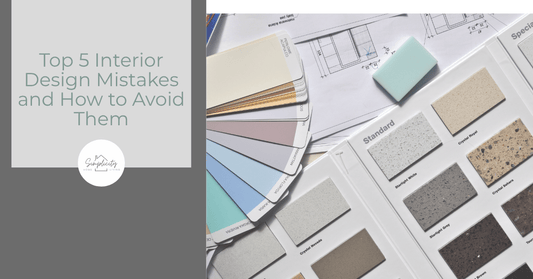Incorporating plants and natural elements into your home is more than just a trend; it’s a way to enhance your living space by bringing the calming and rejuvenating qualities of the natural world indoors.
This approach to home design not only creates a serene and aesthetically pleasing environment but also promotes well-being and sustainability.
In a world where many of us spend the majority of our time indoors, integrating nature into our homes can reconnect us with the outdoors, offering a refreshing and healthful sanctuary.
Not to mention the many benefits of indoor plants!
In this complete guide, we will explore various ways to infuse natural elements into your home, from materials and lighting to plants and colors, providing you with practical tips and inspiration to transform your living space into a nature-inspired haven.
Understanding Nature-Inspired Design
Nature-inspired design is a concept rooted in biophilic design principles, which emphasize the human connection to nature.
This design philosophy focuses on incorporating natural elements, materials, and patterns into interior spaces to create environments that promote comfort, productivity, and well-being.
Historically, this approach can be traced back to ancient cultures that built structures in harmony with their natural surroundings.
In the modern context, nature-inspired decor is not only timeless but also more relevant than ever, offering a counterbalance to the fast-paced, technology-driven world.
As renowned designer Kelly Hoppen puts it, "Bringing the outside in, through the use of natural materials and elements, can transform a space into a calming retreat."
Key Principles of Nature-Inspired Design:
- Use of natural materials like wood, stone, and bamboo.
- Incorporation of natural light and indoor plants.
- Color palettes inspired by nature, such as earth tones and greens.
- Textures and patterns that mimic natural forms.
By integrating these elements into our homes, we can create spaces that nurture our physical and mental health, reduce stress, and improve overall quality of life.
Choosing Natural Materials
Selecting natural materials is a foundational step in nature-inspired decor.
Materials such as wood, stone, bamboo, and rattan bring organic beauty and texture to a home.
Wood, for example, is versatile and timeless, available in various finishes and types like oak, walnut, and teak.
Stone, whether used in flooring, countertops, or decorative accents, adds a sense of permanence and elegance.
Bamboo is an eco-friendly choice, known for its rapid growth and sustainability.
Rattan and wicker, commonly used in furniture, contribute to a relaxed, tropical feel.
Benefits of Using Natural Materials:
- Durability: Often more durable than synthetic alternatives.
- Environmental Impact: Lower environmental impact and better indoor air quality.
- Aesthetics: Natural beauty and organic textures.
To maintain these materials, regular cleaning and occasional treatments, such as oiling wood or sealing stone, can preserve their appearance and longevity.
Interior designer Nate Berkus states, "The materials you use in your home should tell a story. Natural elements bring an authenticity and warmth that’s hard to replicate."
Tips for Choosing Natural Materials:
- Opt for responsibly harvested and certified materials.
- Consider reclaimed wood and recycled materials to reduce environmental footprint.
- Regularly maintain natural materials to ensure longevity.
By carefully selecting and maintaining natural materials, you can create a home that is both beautiful and eco-friendly.
If you're looking for sustainability and elegance, look no further than Medley Furniture who "prioritizes eco-certified, high-quality, and sustainable materials to make ultra comfy, resilient furniture—all with old-school building techniques right here in the USA"
Incorporating Natural Light
Natural light is a vital component of nature-inspired decor, significantly affecting the ambiance and energy of a space.
Maximizing natural light can make rooms feel larger, more welcoming, and more connected to the outdoors.
Interior designer Bobby Berk advises, "Natural light is the best accessory for any room. It enhances colors, highlights textures, and boosts our mood."
Techniques for Maximizing Natural Light:
- Install large windows, skylights, and glass doors.
- Use mirrors and reflective surfaces to amplify light.
- Opt for sheer curtains or blinds that allow light to filter through.
Balancing Natural and Artificial Light:
- Use LED bulbs with a high Color Rendering Index (CRI) to mimic natural light.
- Layer different light sources to create a balanced and inviting atmosphere.
- Use window treatments to manage glare and heat.
By thoughtfully incorporating natural light, you can transform your home into a bright and uplifting environment that nurtures well-being and reduces the need for artificial lighting during the day, contributing to energy efficiency.
Indoor Plants and Greenery
Indoor plants are a cornerstone of nature-inspired decor, offering numerous benefits beyond their visual appeal.
They improve air quality by filtering pollutants, release oxygen, and can even boost mental well-being by reducing stress and enhancing mood.
Popular indoor plants include snake plants, spider plants, and peace lilies, all of which are known for their low maintenance and air-purifying qualities.
___
Get Your Plants From The Sill!
The One Stop Shop For All Things Home Greenery.
Benefits of Indoor Plants:
- Air Quality: Improve air quality by filtering pollutants.
- Mental Well-Being: Reduce stress and enhance mood.
- Aesthetic Appeal: Add beauty and life to indoor spaces.
When selecting plants, consider the environment of your home. Some plants thrive in bright, direct light, while others prefer low light conditions.
Succulents and cacti are ideal for sunny spots, whereas ferns and pothos can flourish in shadier areas.
- Understand specific needs like watering schedules and light requirements.
- Use high-quality potting soil and ensure proper drainage.
- Regularly dust leaves and check for pests.
By integrating plants into your home, you can create a vibrant and dynamic environment that echoes the richness of the natural world.
As plant expert Hilton Carter says, "Plants are not just decorations. They are living, breathing things that can enhance your space and your life."
Plants to Avoid in Your Home!!!
While indoor plants offer many benefits, some species can be harmful to humans and pets.
Knowing which plants to avoid is crucial for creating a safe home environment.
Common toxic plants include:
- Dieffenbachia (Dumb Cane): Its sap can cause irritation and swelling if ingested or if it comes into contact with skin.
- Oleander: Highly toxic, even small amounts can be lethal if ingested.
- Philodendron: Contains calcium oxalate crystals that can cause severe mouth and throat irritation if ingested.
- Sago Palm: All parts, especially the seeds, are highly toxic to pets and humans.
These plants should be avoided in homes with pets or small children.
Plants to Bring into Your Home :)
- Spider Plants: Non-toxic and excellent for air purification.
- Boston Ferns: Safe for pets and humans, adding lush greenery to any room.
- Large Cat Palms: Pet-friendly and great for improving air quality.
- Hoya Carnosa: Great for hanging baskets or anywhere with space for the vines to trail.
- Cast Iron Plant: Hardy and non-toxic to pets and can tolerate low light and infrequent watering.
- Peperomia Obtusifolia (Baby Rubber Plant): Easy-going houseplant characterized by its thick, succulent-like green leaves. A popular variety of Peperomia, it does not need much to thrive and might even reward you with white flower spikes once a year.
By choosing non-toxic plants, you can enjoy the benefits of indoor greenery without the risks, ensuring a safe and healthy home for all occupants.
Nature-Inspired Color Palettes

Nature-inspired color palettes draw from the diverse hues found in the natural world, creating a calming and harmonious atmosphere in your home.
Earth tones like beige, brown, and terracotta evoke the warmth and grounding qualities of soil and rock.
Ocean-inspired blues and greens bring a sense of tranquility and freshness, reminiscent of water and sky.
Forest shades of deep green, moss, and bark brown can make a space feel cozy and inviting.
Interior designer Joanna Gaines suggests, "Using colors found in nature can create a soothing and cohesive look in your home. These hues have a timeless quality that can make any space feel more connected to the outdoors."
Popular Nature-Inspired Color Palettes:
- Earth Tones: Beige, brown, terracotta
- Ocean Hues: Blues, greens, turquoise
- Forest Shades: Deep green, moss, bark brown
Tips for Using Nature-Inspired Colors:
- Bedrooms and Living Areas: Soft, neutral tones promote relaxation and comfort.
- Kitchens and Bathrooms: Bolder hues can energize and uplift.
- Accent Colors: Mix and match different shades within the same palette for depth and interest.
By carefully selecting nature-inspired colors, you can create a cohesive and serene environment that reflects the beauty and diversity of the natural world.
Natural Textures and Patterns

Incorporating natural textures and patterns is a key aspect of nature-inspired decor.
Wood grain, stone veins, and leaf motifs add visual interest and a tactile dimension to your decor. For example, a reclaimed wood coffee table or a stone backsplash can serve as striking focal points in a room.
Textiles like wool, linen, and cotton bring softness and warmth, while also contributing to a sustainable decor approach.
Designer Sarah Richardson notes, "Textures and patterns derived from nature add depth and character to a space. They create a sensory experience that can make a room feel more dynamic and inviting."
Examples of Natural Textures and Patterns:
- Wood Grain: Reclaimed wood furniture, wooden floors
- Stone Veins: Stone countertops, marble accents
- Leaf Motifs: Botanical prints, leaf-patterned fabrics
Ways to Incorporate Natural Textures and Patterns:
- Balance and Contrast: Pair rough textures like jute rugs with smooth surfaces like polished wood floors.
- Botanical Prints: Use cushions, wallpapers, or artwork to infuse spaces with organic shapes and colors.
- Layering: Blend various textures and patterns to create a layered and inviting atmosphere.
By blending different natural textures and patterns, you can create a layered and inviting atmosphere that celebrates the intricate beauty of the natural world.
Eco-Friendly and Sustainable Practices
Sustainability is a crucial element of nature-inspired design, reflecting a commitment to preserving the environment.
To incorporate eco-friendly practices, start by choosing materials and products that are sustainably sourced.
Look for certifications such as FSC (Forest Stewardship Council) for wood products or GOTS (Global Organic Textile Standard) for textiles.
Interior designer and sustainability advocate, Danny Seo, emphasizes, "Sustainable design is not just about choosing eco-friendly materials; it's about creating spaces that last and are kind to the planet."
Eco-Friendly Practices:
- Sustainable Sourcing: Choose materials with environmental certifications.
- Recycling and Upcycling: Repurpose old furniture and fabrics to reduce waste.
- Energy Efficiency: Use LED lighting, energy-efficient appliances, and proper insulation.
Tips for Sourcing Eco-Friendly Materials:
- Local Artisans: Support local businesses that prioritize sustainability.
- Vintage and Antique: Incorporate vintage or antique pieces to reduce the need for new resources.
- Green Building Materials: Opt for non-toxic paints, natural fibers, and recycled materials.
By making conscious choices, you can create a home that not only looks beautiful but also aligns with principles of environmental responsibility, contributing to a healthier planet.
If sustainable materials and furniture are important to you, you should consider Medley Furniture who "prioritizes eco-certified, high-quality, and sustainable materials to make ultra comfy, resilient furniture—all with old-school building techniques right here in the USA"
Nature-Inspired Outdoor Spaces

Extending nature-inspired design to outdoor areas creates a seamless connection between your home and the natural world.
Gardens, patios, and balconies can be transformed into lush, inviting spaces that enhance your living experience.
Start by incorporating native plants that thrive in your local climate, reducing the need for excessive watering and maintenance.
Landscape designer Jamie Durie advises, "Your outdoor space should be an extension of your home. By incorporating natural elements and sustainable practices, you can create a harmonious environment that feels like a true sanctuary."
Ideas for Nature-Inspired Outdoor Spaces:
- Native Plants: Use plants native to your area for easy maintenance. View The Sill's Growing Zone Guide to see what plants will survive in your area
- Natural Materials: Create outdoor living areas with wooden decks, stone pathways, and bamboo fences.
- Water Features: Add fountains or ponds to introduce soothing sounds and attract wildlife.
- Create a 'Living Fence' With Emerald Green Arborvitae!
Creating Seamless Transitions:
- Outdoor Furniture: Use comfortable seating made from sustainable materials.
- Lighting: Solar-powered lights provide ambient lighting and are eco-friendly.
- Decor Elements: Incorporate outdoor rugs, cushions, and decor items that reflect your indoor style.
By thoughtfully designing your outdoor areas, you can create a natural extension of your indoor living space, offering a harmonious and rejuvenating environment.
Growing Forward,
Incorporating nature-inspired elements into your home is a transformative process that enhances both the aesthetic and functional aspects of your living space.
From choosing natural materials and maximizing natural light to integrating indoor plants and eco-friendly practices, there are numerous ways to bring the beauty and tranquility of the natural world into your home.
By avoiding harmful plants and selecting safe, non-toxic alternatives, you can create a healthy environment for all occupants.
Nature-inspired design not only improves the visual appeal of your home but also promotes well-being, sustainability, and a deeper connection to the environment.
Whether you’re redesigning a single room or your entire home, these principles can guide you in creating a serene and nurturing sanctuary.
Embrace the essence of nature in your decor, and experience the profound benefits it can bring to your daily life.
Thanks for reading! Be sure to subscribe and check out some of our other articles:













